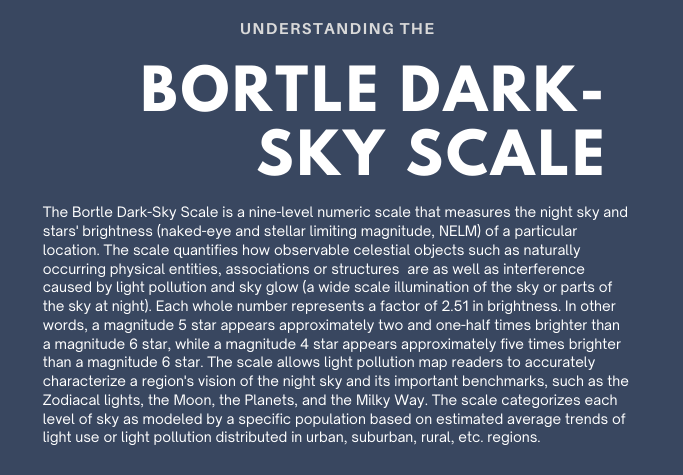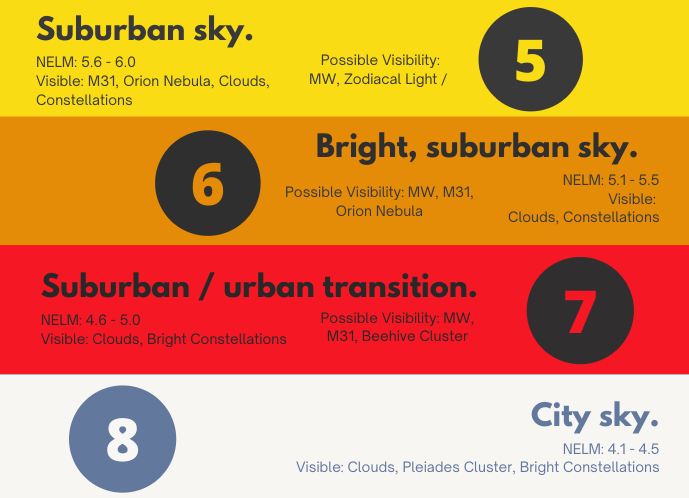Light Pollution Awareness Sites
- ELIZABETH HUANG
- Dec 1, 2020
- 3 min read
Updated: Jul 2, 2022
Light pollution is the excessive and disruptive use of artificial light, damaging several aspects of our environment including the night sky, our climate, wildlife, and our physical health. For many young inquisitive stargazers, artificial lights overpower the darkness necessary for the night sky observations, and this waste of light precludes a scenic view of the starry night and its constellations. To reduce and restore the effects of this current and prominent environmental issue, light pollution awareness and education will be the cornerstone of improving our ecological balance and the current situation of our environments today. Researching and taking initiative to conserve energy and minimize light pollution is necessary to support environmental protection. Here are some sites to get started in your research and initiatives in our local environments!
1. International Dark-Sky Association (IDA)
The International Dark-Sky Association (IDA) provides brief overviews surrounding the unseen effects of light pollution impacting our everyday environment as well as a variety of articles on related topics and actions to spread awareness or steps to take initiative. In this introductory clip, the IDA previews the severity of light pollution and explores the thriving environment that could be possible by limiting the damage caused by artificial lights. For instance, the clip forecasts the visibility of the Milky Way without the defacement caused by bright lights (image shown below). The introduction clip also exemplifies that light pollution detriment multiple facets in our daily lives; for instance disruption of circadian rhythms in our sleep cycles, increased risk for breast and prostate cancer, depression, sleep disorders, diabetes, and more health-related risks. In our local environment, the IDA has even taken the initiative to welcome a new chapter in Ohio to support efforts that protect the nighttime environment from light pollution across the state of Ohio (Ohio Chapter Article ).

2. Sky & Telescope
Sky & Telescope is a site that provides guides and tips for observing the night sky and often publishes articles that update the status of local communities or locations proven optimal for stargazing by credible sources indicating the intensity of the region's impacts from light pollution. Throughout the years their publications have expanded from magazine editions to their site, which has continued to provide insights for inquisitive astronomers and stargazers to better compare the darkness of observational sites. In the following article, the site recognizes Geauga Park District's Observatory Park in Ohio as a popular attraction to stargaze, protected from the effects of light pollution. The site gives an in-depth description of the location and its attributes, which allow it to be so popular and in a range with minimal light pollution:
"The park includes 1,023 acres in Geauga County, and offers five telescope pads where amateur astronomers can set up their equipment...The park's lighting is astronomy-friendly: the fixtures are fully shielded and dim automatically when the Moon is bright."
Local astronomy groups even give accolades for taking in the passionate considerations of the community into effect, which funded the entire project through donations.

Source: https://ohio.org/wps/portal/gov/tourism/travel-inspiration/articles/seeing-stars-at-observatory-park Night sky observed at Geauga Park District's Observatory Park in Ohio3. Light Pollution Map(s)
Discovering accessible areas to stargaze that are not overly damaged by excessive light pollution is easy to research! Many sites include overlays or interactive maps that can allow you to see the severity of light pollution in your region or aid your research of light pollution in a specific region of interest.
Here are some interactive maps you can use with different perspectives and :
uses NOAA/EOG VIIRS, World Atlas 2015, observatories, clouds, and SQM/SQC overlay contributed by users
based on data published June 10 by a team of researchers led by Fabio Falchi and including NOAA's Chris Elvidge and CIRES' Kimberly Baugh
initially created by NASA's Goddard Space Flight Center, the night lights by NOAA's National Geophysical Data Center.
an international scientific research program that crowdsources measurements of light pollution in the night sky
Typically, these interactive maps come with a color-coded key, better identified as a Bortle Dark-Sky Scale, that will indicate how severe light pollution is in a region. The interactive map used is the first link listed above, and the interface includes a user-friendly component, in which users can simply click to pinpoint their area of interest to gather information on its light pollution levels. In the examples below, the severity of light pollution detriments on the following regions/ environments range from minimal, good, mildly severe, then severe represented by the colors black, green, yellow, and red, respectively. The following screenshots include information about each region's light pollution severity over time and how they have evolved with greater integration of technology and lights in our environments (when looking through the images, notice the light pollution trends of known populated areas compared to more suburban and isolated regions).



















Comments